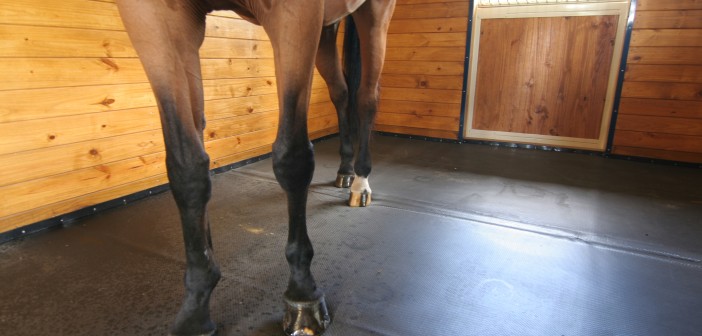A surprise inspector of the stalls of Times Square’s carriage horses noted the cleanliness of the horse quarters and that they were given sufficient room and plenty of bedding. My purpose here is not to engage in the controversy- one can note on the other side the lack of grazing space- but to note that the stalls were correctly maintained, and that stall maintenance is a part of horse maintenance. That basic horse care is made easier with the use of a rubber horse mat.
Traditional Stall Care Methods
Horses enjoy the outdoors and need some room to roam, and preferably to graze. But without some kind of shelter, they would be exposed to the elements and could fall into poor health. Thus the existence of horse barns (stables) and of stalls for individual horses. The stalls must be sturdily constructed of wood, metal, or some combination thereof to stand up against kicks and pushes by these powerful creatures. Horse owners need stalls to keep tabs on the location of their horses, for match-make breeding, for veterinary care, hoof care and shoeing, grooming, feeding, and a multitude of purposes. But putting a horse in a confined space can produce some problems. A horse typically produces 15 pounds of manure and gallons of urine every single day. An bedding of straw wood shavings is needed to absorb the waste material and prevent excessive increase in bacteria, parasites, and worms. As the floor of a stall is typically dirt mixed with clay, every few years the floor has to be dug up again and re-clayed. This is a lot of work. In addition, it is almost impossible to remove all the waste since some of it sinks into or sticks to the ground. Some stalls have concrete floors, but these are hard on the horses hooves and comfort. A new strategy for caring for stalled horses seems desirable.
What are Horse Stall Mats?
Horse stall mats are generally made of rubber and meant to cover your stall floor, though sometimes they are placed over walkways in the stable. While foam mats, horse stall tiles, and horse trailer mats exist, we shall focus on rubber stall mats. The rubber may be vulcanized or polymerized. Vulcanized mats often are diamond topped to increase traction since vulcanization will leave rubber somewhat hard-surfaced. Polymerized rubber is softer and needs no diamond-topping. These mats are often 1/2 inch or 3/4 inch thick and rather weighty (100 lbs is not uncommon). They are durable and come with very long warranties. They will either be a size that will cover a stall, or in smaller, interlocking pieces so you can puzzle the floor together. Horse mats are skid-resistant and prevent horses from pawing their way through the floor. Additionally, these mats are often manufactured from recycled rubber.
Horse Stall Mats Ease Horse Stall Maintenance
With a stall mat, little bedding is needed to deal with horse mess. Urine will pool on the mat and can be easily soaked up with only a small amount of hay or wood shavings. Almost 100% of the mess can be cleaned up this way, and little smell is left. Anti-bacterial additives in the mat also fight odors. What odor there may be could be neutralized with a little lime or other deodorizer. The mats can be easily sprayed off with water or scrubbed a little if necessary. Cleaning forks glide over the mat surface well enough. These mats make daily clean ups easy and major clean ups rare. They save you time and effort. They also save you money by reducing the bedding needed.
Horse Stall Mats are Designed for Horse Hoofs
According to HorseMatsCanada.com, rubber horse mats cushion hooves and facilitate hoof and joint healthiness. They said, “They can reduce stress on a horse’s legs and thus its whole body. Some mats have grooved bottoms that further enhance the mat’s hoof friendliness. Be aware, however, that a grooved mat may not work over a wood or cement floor.” But there are good non-grooved mats as well, so it is no problem.
How to Install a Horse Stall Mat
Whether your stall is 10 x 12, 14 x 14, or some other dimensions, first measure each stall accurately. It is advisable for dirt floors to lay down a six inch layer of compact, crushed stones not more than 1/4 to 1/2 inch in diameter
and then cover that surface with a mat. Sand should not be the substratum as it will move too easily under the horse’s weight. Make sure the floor is level and well-drained. For interlocking systems, you may need to caulk the pieces together.




